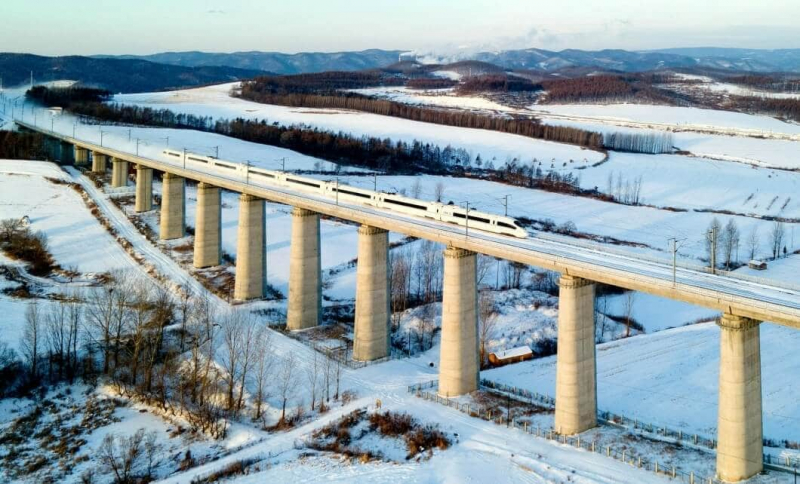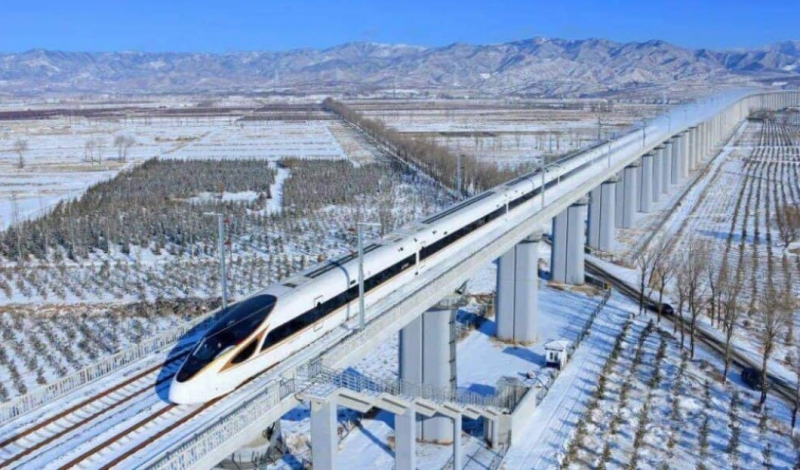On a chilly November morn in 2025, the “Snow Dragon,” or the CR400BF-GZ Fuxing to use its official name, a sleek train in white and silver, slid away from Changchun station in northeast China. It picked up speed, hitting its designed 350 km/h even with the air outside biting at −25 °C. But this wasn’t just any fast train; it’s the world’s first, really, crafted to handle Siberian-level cold while still running full-tilt. And it’s meant for a pretty specific crowd: skiers and snowboarders.
From 3 Hours to 50 Minutes: A Game-changer for Chinese Skiing
The Snow Dragon’s main route seriously shortens the trip. Getting from Changchun’s center to Beidahu Ski Resort in Jilin province? It used to take over three hours. Now, it’s down to a quick 50 minutes. Instead of a long, often canceled drive on icy roads, it’s now faster than your average commute, practically speaking.
Beidahu, already a top Chinese skiing spot, along with Vanke Lake Songhua and Wanda Changbaishan resorts nearby, now sits inside a “one-hour high-speed circle,” serving cities with over 30 million people. Now, families from Beijing could, for example, easily head out after breakfast, ski the whole day, and be back home in time for dinner.
Built for the Deep Freeze
To run at 350 km/h when temperatures drop to −40 °C called for big changes in design:
- Cars are pressurized and sealed tight, like an airplane, to stop frost from forming on windows and doors.
- Water tanks are heated and there are anti-icing systems under each door. Alloys and rubber seals are special, staying flexible even when it’s −45 °C. Pantographs, brakes, and bogies all have de-icing heaters.
- A series of hot-air blowers are placed along the tracks at key spots to keep switches clear of ice.
- Each train carries five mechanics, who do 15-minute checks before departure. This includes using thermal cameras to scan wheels and braking systems—something you don’t typically see on regular high-speed lines.
- Inside, the train feels like a ski lodge. Each car has big luggage racks for skis and snowboards (up to 1.9 m long). You’ll also find padded hooks and drip trays to catch melting snow. The seats are wider than what you’d find on standard Fuxing trains, the Wi-Fi is 5G-enabled throughout the mountainous parts of the journey, and USB-C and 220 V sockets are everywhere – because no one wants their GoPro to die while hitting the slopes.
Click here to preview your posts with PRO themes ››
The Invisible Megaproject Underneath
To achieve all this in a tough, geologically challenging area of China, a big chunk—77%—of the 180 km line is either on viaducts or running through tunnels. Some parts of the track are suspended 50 meters over frozen valleys; other parts go underneath granite massifs. The construction teams had to work in temperatures that often reached −35 °C, making use of a unique low-temperature concrete that sets at −15 °C.
The result? A train line that can handle blizzards with ease. So while roads are closed and regular trains are slow, the Snow Dragon is built to stick to its schedule, even in the worst winter storms in Jilin.

From 170 Million Winter Visitors to Much More
During the 2024–2025 season (November to March), Jilin province already saw around 170 million tourist trips, which is a huge number driven mostly by people traveling inside China. Local officials and the China Tourism Group are now suggesting that the Snow Dragon will push annual winter visits past 200 million in the next three years, generally speaking.
Ski resorts are expanding fast. For example, Beidahu is adding 40 new pistes and three gondolas for the 2026–2027 season. Also, Club Med and Hyatt have both announced new properties with 400+ rooms along the high-speed train line, it should be noted.
Asia’s New Ski Superpower Flexes Its Muscles
A decade ago, China as a rival to Japan or South Korea for skiing? It seemed a stretch. Yet today, with over 800 ski resorts, the biggest indoor snow center in the world (Harbin’s Wanda Indoor Skiing Paradise), and now the Snow Dragon making it easy to reach powder in under… well, things are changing. Now, everything’s different. One Beidahu resort executive observed, as the first trainload of skiers arrived, that their business had fundamentally changed. In his words, the concern wasn’t snow anymore; it was the train schedule.
The arrival of this mode of transport conveys a very clear message to both China’s growing middle class, and to international tourists realizing the cost benefits: the resort scene has fundamentally shifted. Powder is now on their doorstep.


